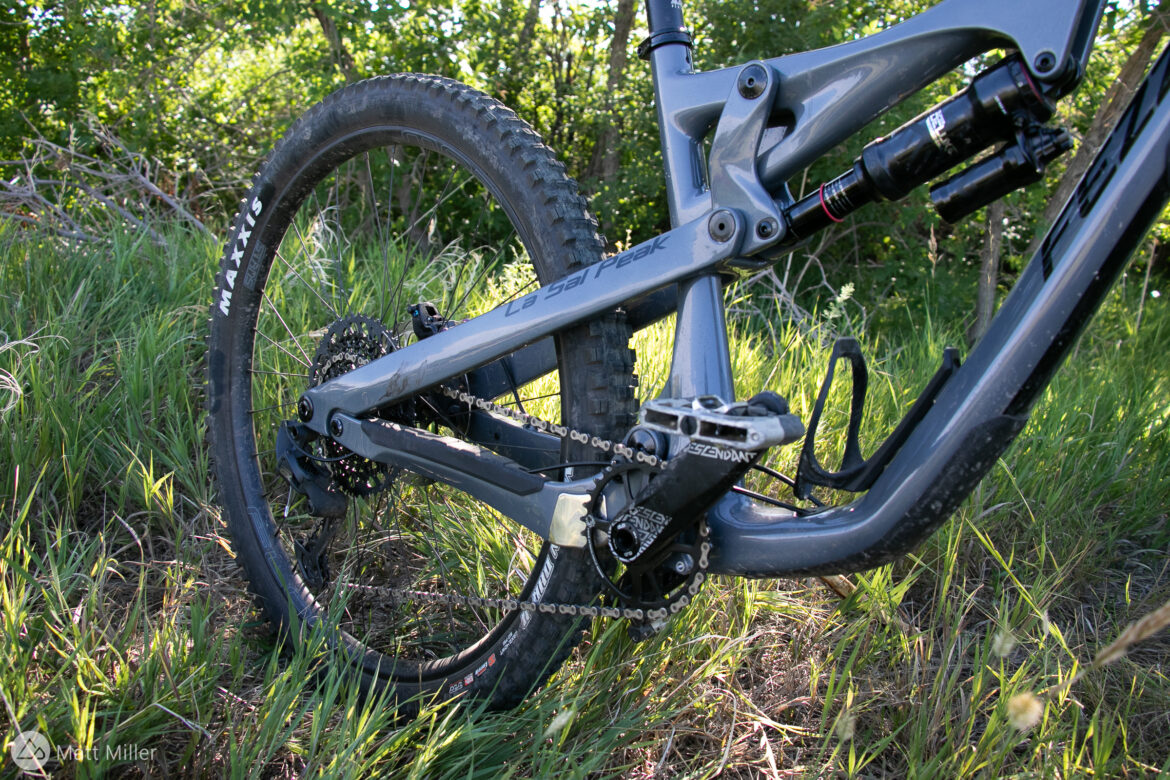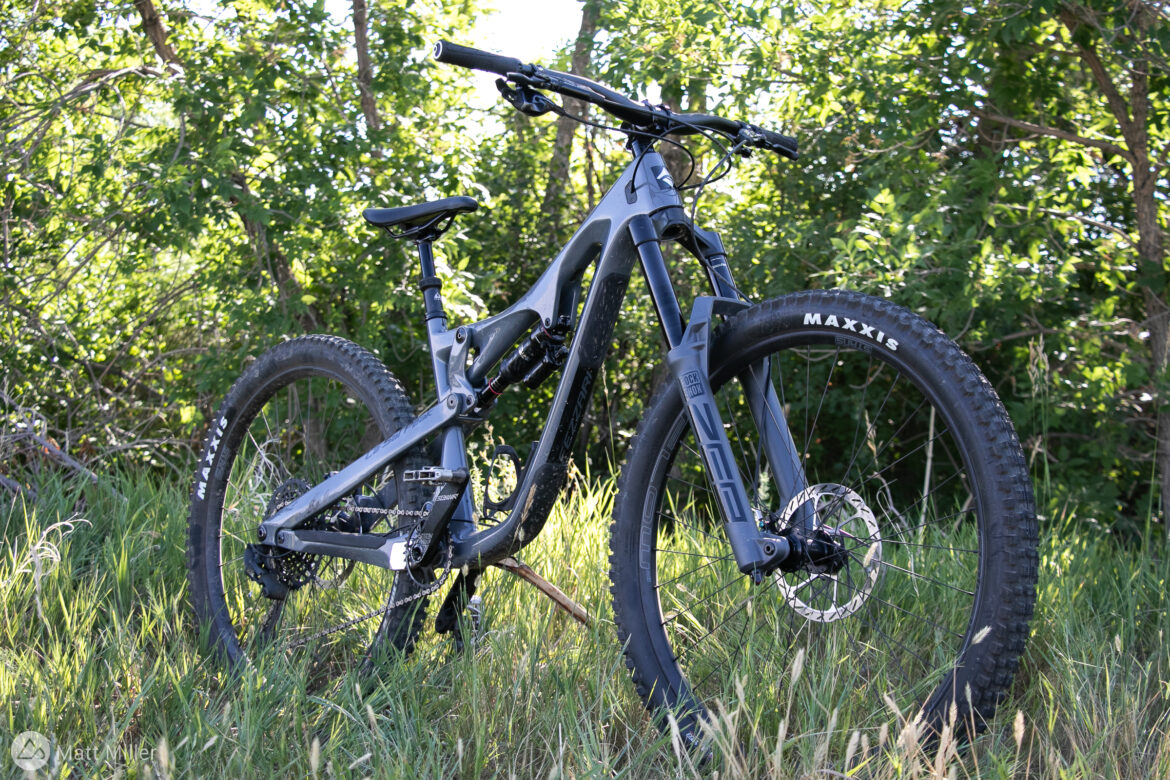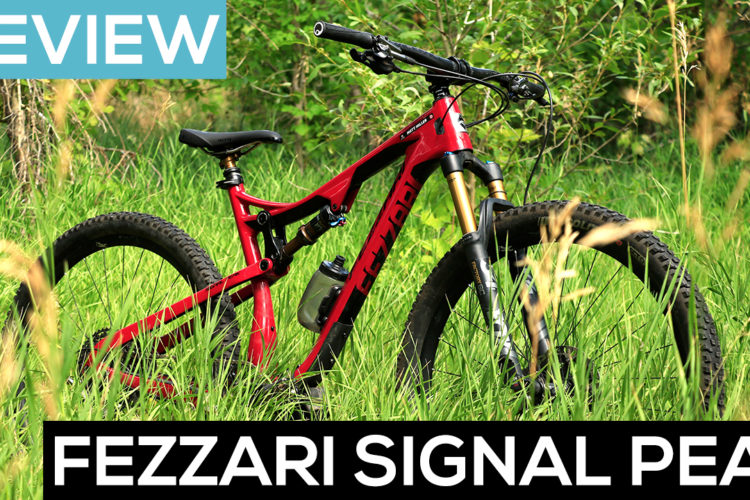
I’ve ridden a handful of Fezzari bikes by now, and I have yet to find one I don’t like. The first generation of the Fezzari La Sal Peak was one that I missed though, and that bike turned heads when it debuted in 2018. Fezzari’s first long-travel 29er got rave reviews because of its progressive geometry, supportive suspension, and value-minded builds.
At that time, the 150mm 29er with a 160mm fork, a 65° head tube angle, short seat tubes, and a lengthy-for-its-time reach and wheelbase at 445mm and 1,195mm (size medium) was notable. While the times have changed, and its own mid-travel Delano Peak has progressed past these numbers, the seat tube was and is, still quite steep.
So, what did Fezzari do with the latest La Sal Peak to keep it high on the list of garage-worthy enduro bikes? More travel, longer and slacker geo, and in some areas, it is lower too.
The La Sal Peak now has 170mm of travel front and rear. It’s one of those bikes that actually has the same amount of travel in shock and fork, which seems increasingly rare.
The geometry saw a major revision too and the frame aesthetics are completely different.
On the medium I tested, there is a 64° HTA, a 77.5° STA, a still short 420mm seat tube, a lower 741mm standover height, and a 1,230mm wheelbase. See the full geo chart below.
On the La Sal’s new suspension kinematics, Fezzari tuned the four-bar layout for better pedaling characteristics and they lowered the leverage rate, slightly decreasing its progressiveness. The bike can be used with either an air or coil shock and the travel can be reduced to 160mm. Or it can be used with a 180mm single crown fork or up to a 203mm dual crown.

The frame is still full carbon, including the rocker link, and there is a high/low flip-chip that allows riders to set it up as a mixed-wheel bike.
Impressively, the Fezzari La Sal Peak starts at $4,000. We tested a $5,000 Elite build with a SRAM GX drivetrain, a RockShox Super Deluxe Ultimate rear shock and a Zeb Ultimate fork. The Elite comes with a PNW Loam dropper post, Stan’s Flow MK4 wheels, and SRAM Code RSC brakes too. The La Sal Peak is by far the best-specced bike for the price I’ve checked out all year.
The top-shelf Team build includes a SRAM XO1 AXS drivetrain, Fox Factory suspension — a 38 fork and an X2 shock — and ENVE AM30 wheels, for $9,000.
Fezzari La Sal Peak ride impressions

I received the Fezzari La Sal Peak hot on the heels of my time with the Santa Cruz Megatower, which made for great back to back testing on two of the latest and greatest big bikes this year. Both of the bikes saw time in the Colorado alpine with their share of steep and rocky climbs and stunning singletrack descents. We’ll get into a comparison article between the two soon. The two have similar intent, but carry out their missions very differently.
The La Sal Peak was a breeze to set up, like any Fezzari I’ve received in the past. With new buyers, the brand will go through an extensive fit process before sending the bike so that it’s ready to rock. That includes everything from sizing the dropper post to throwing sealant in the tires. Usually, you just have to throw the front tire on, throw on the handlebars, and tighten up the cockpit and you’re ready to rock.
Climbing on the Fezzari La Sal Peak
There are certain things you expect after testing a lot of bikes. After a while, you find that a 170mm bike climbs like a 170mm bike, and a 120mm bike climbs like a 120mm bike. Yes, mountain bikes are more efficient climbers than ever, but I don’t find they transcend categories.
That said, the La Sal Peak is the best climbing enduro bike I have ridden in a while. A few reasons contribute to this. First, the build weight is only ~32lbs. That’s a great weight for 170mm full-suspension bike.
Second, the suspension is quite responsive to pedal input. The lower weight likely helps its responsiveness too, but the La Sal Peak quickly moves forward when you step on the pedals.
Third, the geometry puts the rider in a great position for steep climbs, and steep climbs usually means steep descents which is where you want the La Sal Peak. For years we’ve seen head tube angles get slacker and slacker, but it seems like Fezzari and other brands are finding the limits of seat tube angles more quickly. While the head tube angle got slacker by a degree, the seat tube steepened by only a half-degree.
There are bikes out there where the seat tubes feel too steep, but it seems like Fezzari wisely pumped the brakes a bit. Too steep often makes for a cramped climbing position and can result in a loss of traction in the rear wheel, and both are problems that the La Sal Peak doesn’t suffer from. Though the suspension feels firm and efficient it is still plenty active for rock-gripping traction on technical climbs.
Descending

The La Sal Peak blends together elements of pure shredability with a touch of agile responsiveness you might find out of a trail bike. The reach, at 455mm, and the wheelbase at 1,230 for a medium, are not the longest on the market, but they are long enough to bring about the stability the bike requires with a sharpness to weave its way through tighter lines.
The suspension on the La Sal Peak feels pretty neutral, balancing small bump compliance with support. I believe the supportive mid-stroke and the moderate reach and wheelbase makes for a long-travel bike you can really whip around and launch off stumps and roots. This also gives the bike quick handling manners if you want to change lines at a fast pace.
The La Sal Peak feels like it rides a bit higher in its travel on technical terrain. It stays supportive but it’s also not the most ground-hugging enduro bike on the market. There are pros and cons to this of course, and if you’re someone who likes to be a little more active on the bike then this is a good thing. Enduro rigs often have an elephant mentality: charge hard and don’t leave the ground, but the La Sal Peak is still quite fun to whip around.
On bigger and repeated impacts, the La Sal Peak carries its weight well. The rear suspension ramps up nicely and never feels shy about diving right into the next troublesome section.
Fezzari La Sal Peak component check

Fezzari really throws a ton of value into the Elite build. If I had my snob hat on, the only part I’m not in love with are the wheels, but they are still pretty decent. The Stan’s Flow MK4 is a solid rim and the Stan’s Neo hubs have 5° engagement — hard to complain about considering all the other goodies, like SRAM Ultimate suspension and Code RSC brakes that come on the bike too.
The Code RSCs aren’t my favorite brakes but they still bite down on the rotor hard and have great stopping power. On a fine details note, kudos to Fezzari for the oil slick caliper bolts and miscellaneous bolts on the lever. It’s a small detail but one that adds a little more personality to an OEM bike.
It was nice spending time on the RockShox Zeb too. The mid-stroke support in the damper is excellent and lends the bike an even more supportive platform for carving corners and riding steeps.
Pros and cons of the Fezzari La Sal Peak
Pros
- Bang for the buck
- Versatile/agile for a big bike
- Great climbing characteristics for 170mm of travel
Cons
- Not the most ground-hugging feel for a big bike

Closing thoughts
How do you make a great bike better? A little here and a little there. Fezzari found a great recipe in the La Sal Peak’s geometry, giving it newer angles where they were needed, and holding off where it didn’t. The rear suspension gained a good deal of travel, but it’s about as good as a 170mm bike can be uphill, and coupled with its agile handling downhill, the La Sal Peak is surprisingly versatile for a long travel 29er.
- Price: $4,000-$9,000
- Buy from Fezzari Bicycles.























2 Comments
Sep 27, 2022
Aug 7, 2024